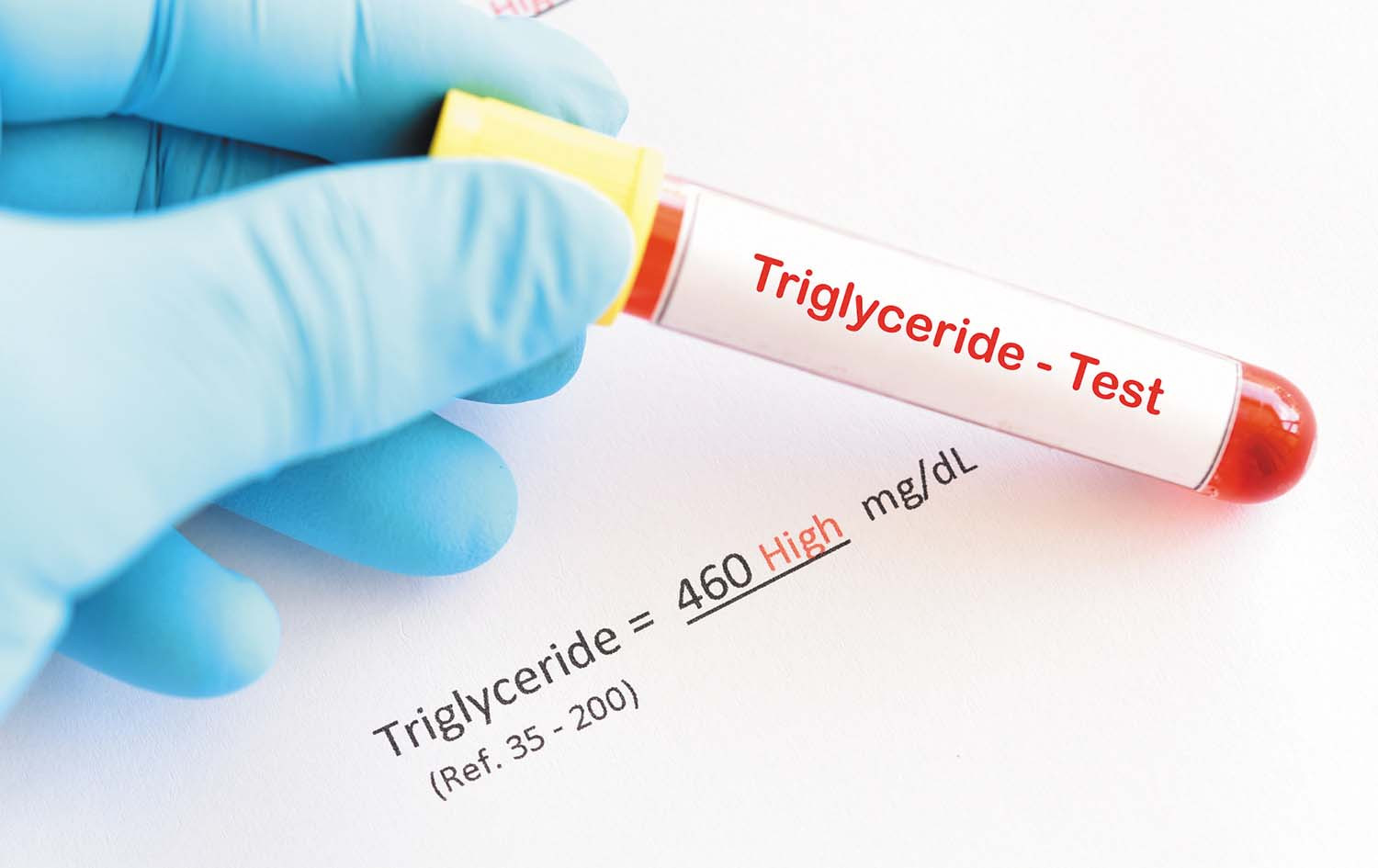Taming high triglycerides
Weight loss and a healthy diet can lower triglyceride levels. But very high levels require medication, and new options are in the pipeline.
- Reviewed by Christopher P. Cannon, MD, Editor in Chief, Harvard Heart Letter; Editorial Advisory Board Member, Harvard Health Publishing

When you get a cholesterol test (also known as a lipid panel or lipid profile), the most important value is your low-density lipoprotein (LDL) cholesterol, sometimes called "bad" cholesterol. High LDL levels track closely with the artery-clogging process at the root of most heart disease. But a lipid panel also reveals your blood level of triglycerides, which are the most common form of fat both in food and in your bloodstream. Because levels rise after you eat, triglycerides need to be measured after at least eight hours of fasting to get an accurate reading for treatment decisions. When and why should you pay attention to your triglyceride value?
For healthy adults, a normal level is less than 150 milligrams per deciliter (mg/dL), but 25% to 30% of Americans have values that exceed that level. Values of 151 to 200 mg/dL are borderline high; those 201 to 499 are high, and those 500 and higher are very high.
When does risk start to rise?
Many studies have linked high triglycerides to a heightened risk of heart disease. "But when you adjust for having related problems, such as obesity or type 2 diabetes, the association isn't quite as strong," says Dr. Nicholas Marston, a preventive cardiologist at Harvard-affiliated Brigham and Women's Hospital. Still, a recent study found that the risk of heart-related problems starts to rise at triglyceride levels greater than 89 mg/dL — far lower than the 150 mg/dL value long considered to be normal. The study, published Feb. 6, 2024, in the Journal of the American Heart Association, included more than 14,000 Italian adults who were followed for an average of just over 11 years.
How to lower triglycerides
The good news is that lifestyle changes can have a big impact on triglyceride levels.
"If people with high triglycerides eat a healthier diet, exercise regularly, and lose weight, they can lower their levels by more than 50%," says Dr. Marston. These tips can help:
Choose carbs wisely. Cut back on easily digested carbohydrates like white bread, white rice, chips, sugar-laden breakfast cereals, and anything else — including beverages — with a lot of added sugar.
Watch fats. Cut back on saturated fats from meat and butter, which can elevate triglycerides. Try to eat more unsaturated fats from plants, oils, and fish, which bring down triglycerides.
Avoid excess alcohol. Moderate drinking (one drink per day for women, two for men) may be reasonable. But less is better if your triglycerides are high.
Get moving. Regular exercise lowers triglycerides.
Aim for a healthy weight. If you qualify as obese or overweight, reaching a healthy body weight can drive your triglycerides down to a normal range. Dropping even just 5% to 10% of your weight can help.
Medication for high triglycerides
Anyone with a triglyceride level of 150 to 499 should be checked and treated for any underlying health problems that might be to blame, including diabetes, obesity, a low thyroid level (hypothyroidism), and liver or kidney disease. But when triglycerides remain high after addressing these issues and making lifestyle changes, medication may be a good idea, especially for people at risk for cardiovascular disease.
Many people in this category are already taking a cholesterol-lowering statin, which lowers triglycerides by about 30%. Drugs known as fibrates, including fenofibrate (Antara, TriCor, others) and gemfibrozil (Lopid) lower triglyceride levels by about 50%, but they do not lower the risk of heart attack or stroke when added to a statin. Icosapent ethyl (Vascepa), which contains a highly purified form of a specific fat in fish oil, lowers triglycerides by about 30%. And when people with diabetes or heart disease take icosapent ethyl with a statin, it lowers their risk of heart attack, stroke, and death from cardiac causes by about 25%.
On the horizon
Very high triglyceride levels (500 mg/dL and above) sometimes have a genetic component. An extreme example is familial hyperchylomicronemia syndrome (FCS), which affects just one to two in a million people. These people — whose blood appears milky from the high fat levels — are prone to inflammation of the pancreas (pancreatitis). Serious cases can be life-threatening. Two investigational drugs, plozasiran and olezarsen, are RNA-targeted therapies that put the brakes on a protein that controls triglyceride metabolism. Both drugs lower triglyceride levels dramatically and eliminate the risk of pancreatitis, says Dr. Marston. These drugs may also prove helpful for treating people with moderately elevated triglycerides levels, he adds.
Image: © jarun011/Getty Images
About the Author

Julie Corliss, Executive Editor, Harvard Heart Letter
About the Reviewer

Christopher P. Cannon, MD, Editor in Chief, Harvard Heart Letter; Editorial Advisory Board Member, Harvard Health Publishing
Disclaimer:
As a service to our readers, Harvard Health Publishing provides access to our library of archived content. Please note the date of last review or update on all articles.
No content on this site, regardless of date, should ever be used as a substitute for direct medical advice from your doctor or other qualified clinician.
















